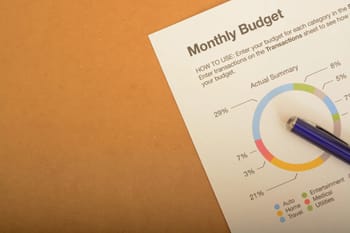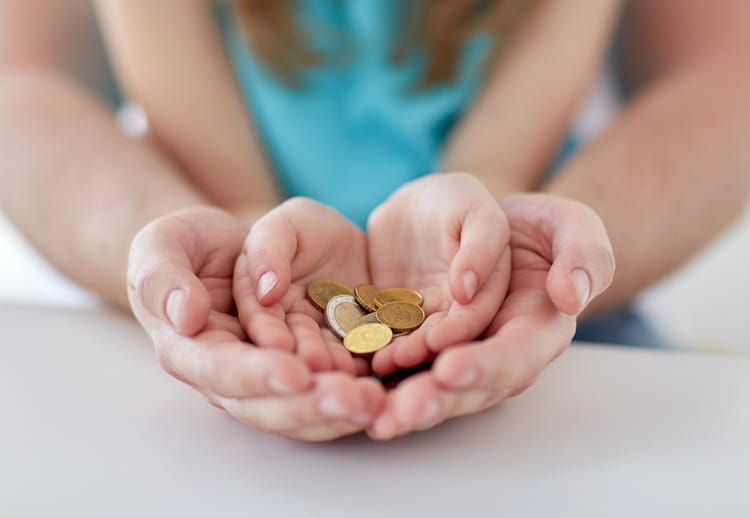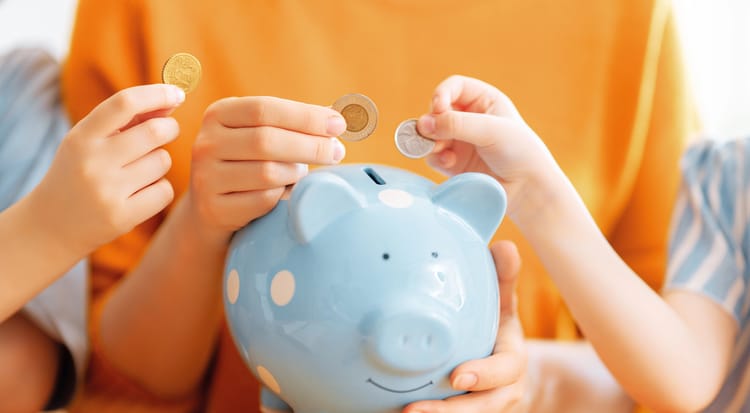A personal cash reserve is an important step in building financial stability and confidence. By keeping your spending under control, you can avoid uncomfortable situations and are more likely to save for long-term goals such as retirement or starting a family.
In short, to build up a cash reserve, you need to:
- Start by determining your regular expenses,
- Deduct these from your income to find the amount of money available for each month, and
- Develop a savings plan and stick to it by systematically saving money.
So read our article to learn how to build personal cash reserves and accustom yourself to systematic savings.
Why is Having a Personal Cash Reserve so Important?
Before we dive into the details of why a personal cash reserve is important and how to make a savings plan for yourself, let’s answer the most basic question — what are cash reserves?
A personal cash reserve refers to money that you set aside for personal use. Such a fund can be used to cover unexpected expenses like a medical bill or car repair.
A personal cash reserve can also be a valuable tool for managing financial risk. A safety cushion of money to fall back on eliminates the need to use credit or loan options to cover unexpected costs.
Cash reserve definition
A cash reserve definition would be easier to understand in terms of what it is not, rather than what it is.
Having a personal cash reserve does not mean that you are debt free. A cash reserve simply helps you manage your money efficiently so you don’t feel overwhelmed by short-term financial obligations and can stay on track towards long-term goals.
Here are a few things to keep in mind when creating a personal cash reserve:
- You must make sure you have realistic goals for how much money you want to save,
- You must not overspend on frivolous items in order to fill your reserve, and
- You must review your spending habits regularly to identify improvement areas and stay financially responsible.
If you have enough cash saved up in a personal cash reserve to cover short-term needs, it can help you avoid uncomfortable financial situations like borrowing money from a friend to cover unexpected expenses. Having money set aside for emergencies helps build peace of mind and allows you to make financial decisions with confidence.
Let’s observe why it is important to build a personal cash reserve. It:
Helps reduce the need for debt
A healthy personal cash reserve means having at least six months of living expenses saved and available in case of an unexpected financial need. The best way to start building a personal cash reserve is to either manually set aside a portion of each paycheck in a separate savings account or set up automatic bank transfers for added conveniences. Once you have accumulated the necessary amount of savings, it is important to keep track of your total balance and assess any growth or decline in it over time.
Such a well-planned personal cash reserve can help deal with unexpected expenses, thus reducing the need for borrowing money. If you aren’t in debt, you will have more money available when you’re looking to make large purchases like a new phone or a better washing machine.
A personal cash reserve can also be helpful in situations where you need quick and easy access to funds, like a gift for a friend’s wedding, or a group trip planned on short notice.
Helps enjoy a low-stress lifestyle
When you have money saved in a personal cash reserve, you do not need to worry about the possibility of additional expenses when falling ill, or loss of job. You can use your spending money flexibly on anything you may need or want to do without stressing about financial stability.
Even in the face of a recession or a pandemic, you can navigate your financial and social situations a lot more easily if you have a personal cash reserve to support you in tough times.
A personal cash reserve helps you overcome uncertainty about the future
Helps you stay on track toward retirement and other goals
By putting away a designated amount of your income every month, you will have a cushion to deal with emergencies without having to delay your financial milestones. Some prudent planning includes:
- Paying off debt,
- Buying a home,
- Saving for retirement, and
- Other important costs associated with living longer and better.
A personal cash reserve can also be used as an emergency fund in case of job loss or health hardships that may arise along the way.
Keeping your savings in a cash reserve separate from your regular bank account ensures that you are less likely to spend all of your available funds in one go. This systematic saving option helps you stay responsible in your day-to-day spending while keeping your long term financial goals intact and using cash reserves in retirement.
What is a Systematic Saving Plan?
Saving up money seems to be a straightforward concept on the face of it. However, it requires proper planning and careful execution. The first step in the process is answering the question, “what is a savings plan”.
A systematic personal savings plan is a financial strategy through which you set aside a fixed amount of money each month to grow over time. This type of plan can help you build up a solid cash reserve for financial emergencies, long-term goals, and stability during times of economic uncertainty.
You might want to start small and slowly increase the amount you save every month. If you already have a regular budget, you should be able to save money seamlessly. If not, you can try creating an online or paper budget where you list every expense and compute your average spending budget per month.
How to make a savings plan? There is no single answer to this question, as everyone has their own unique needs and preferences when building a savings plan. Each person must create a personal savings plan based on their personal budget and savings goals.
Personal savings plan
To create a personal savings plan, you should start by creating a budget where you list all of your expenses. Next, think about what you can cut from your spending without sacrificing essential needs. It is important to have all your expenses fully accounted for in your budget so you know how much can be successfully saved. If you put too much money aside without properly planning your budget, you may struggle with your day-to-day expenses, which will add unnecessary stress to the savings process.
Once you have a list of potential cuts, make a plan to save as much money as possible each month. Over time, increasing the amount you save will allow you to live more comfortably and afford future goals or emergencies.
Throughout the process of building and executing a savings plan, it is important to keep track of your expenses regularly and plan ahead for upcoming bills and events. This will help you put money away each month without even realising it!
A personal savings plan starts with budgeting and making a list of expenses
Tips for Building and Maintaining a Personal Cash Reserve
Here are some tips for setting up a savings plan:
1) Make a list of all the expenses that come up regularly, such as groceries, rent, utilities bills, car repairs etc. Once you know these costs well enough to budget for them each month, you can start thinking about other expenses like birthday presents or Christmas gifts, which may fall outside of typical monthly spending.
2) Dedicate at least 20% of your income towards different saving options each month. If you can save a bit more, you’ll hit your goals sooner, but 20% is a good jumping off point for building up your savings over time.
3) Automate as much of your savings as possible by setting up recurring bank or investment accounts with set frequencies (e.g., every month). This will help ensure that money is being deducted from your account automatically, and doesn't get lost in the shuffle or forgotten accidentally.
4) Throw some extra money into your savings account each month (approximately 20% of your income) as an "emergency fund" – this could be enough cash to cover unexpected large expenses like car repairs, home repair costs, or surgery. An emergency fund within your savings can help ease financial stress and let you explore more opportunities without fear of failure.
5) Keep a budget journal to write what you've spent and saved for each category of expense. This discipline will help keep you accountable and track progress over time.
6) Review your budget periodically and make changes as needed in order to adjust for changing circumstances, like a new rental cost or appliance repairs that cost more than expected.
7) Have a contingency plan if you aren’t able to hit the goals you set for your savings plan. The most probable reason for your plan to fail would be the volatility of your ongoing expenses. Therefore, your backup plan must be designed with extra (yet reasonable) wiggle room for expenses and a more easily achievable savings target. Your contingency plan shouldn’t let you slide endlessly. It should give you just a little more time to plan better and get back to your original savings target.
8) Lastly, don't forget to enjoy yourself. Saving is not about living without spending and punishing yourself. It’s about avoiding unnecessary expenses and learning to enjoy smartly in the present so you’re all set for a financially secure future.
How much should I keep in savings?
Everyone has different needs based on their financial situations. However, generally speaking, you should set aside at least 3-6 months' worth of living expenses in savings to cover unexpected expenses.
For those with high household debt levels and ongoing monthly bills, it is important to aim higher and save up 6-12 months' worth of living expenses.
It is also important to factor in different saving options to achieve long-term goals, such as cash reserves in a retirement fund.
Determine how much you need for a personal reserve
Now that you know what a personal cash reserve is, your next question must be, “How much cash reserve should I have?”
While there is no one definitive answer to the question of how much you should keep in savings, it is crucial to set realistic and attainable goals so you succeed at saving, and stay on track towards financial stability.
Here are two tried-and-tested methods of determining how much you need for a personal cash reserve:
The 50/30/20 rule
The 50/30/20 rule [1] is a widely accepted method for saving money. The principle behind this rule is to split your annual income three ways:
- 50% of your annual income: Savings,
- 30% of your annual income: Expenses, and
- 20% of your annual income: Set aside in an emergency fund.
This rule can be helpful in directing your spending habits and developing a successful savings plan. Since the break-down of finances in this plan is a simple percentage-wise split, you can increase your savings rate steadily over time.
The Golden Ratio
- The Past — Paying for things you bought/did in the past: 35%
- The Present — Funding your current lifestyle: 15%
- The Future — Accumulating to create future income: 50%
While the Golden Ratio is manageable and reliable for most people, you can choose to modify it to suit your specific requirements. However, while doing so, it is essential to focus on reducing past debt and present expenses so that you can have more cash saved for an investment savings plan.
However, there is no one-size-fits-all answer to the question, “how much cash reserve should I have?” The amount you save will vary depending on your individual financial situation and needs. However, generally speaking, it's a good idea to aim for at least 6 months of living expenses in case of an emergency.
Use tried-and-tested methods to determine how much you need for your cash reserve
Cut down your expenses if necessary
It's important to be mindful of your spending habits and cut back where necessary so you can put more money aside for when an emergency hits. By being strategic about your expenditures, you'll be able to make headway on saving for unexpected costs and build up a buffer in case of misfortune.
Here are some tips on how to slash expenses without feeling like a financial martyr:
- Research your spending patterns: Make a list of all the regular expenses you are shelling out each month, and find room to slash costs. Drive down prices on groceries, fill up at the gas station less frequently, skip apps that you don't use often, etc.
- Evaluate your monthly bills: Could you get by with a smaller mortgage/rental payment? Are there any big ticket items that could be cut down or eliminated altogether? It's important to assess what will save you money, and make life more manageable.
- Automate your finances: Set up automatic payments on your bills so you're not constantly stressing about when the next bill is due. Even small changes can add up, and make a big impact over time.
- Do one step at a time: Don't try to cut all of your expenses in one go – start by making manageable changes and see how much money you save as a result. If saving money becomes a habit, more drastic measures may be unnecessary down the road!
Track your finances
It can be tempting to put off tracking your finances, especially if you're good at budgeting and playing money manager for other aspects of your life. But it's important to understand where your money is going – both for financial planning purposes and in case of an emergency.
Tracking expenses, checking balances, and having an investment savings plan can help you stay on top of your spending habits. Thus, you can have a clear understanding of how much financial resources are available should unexpected costs or bills arise.
Additionally, knowing where all the extra cash has been hiding (in a high-interest savings account, for example) can help you make additional budget cuts in certain areas of your life.
Invest your savings
Investing your savings can be a smart way to grow your money over time and protect it from potential risks. By investing regularly throughout your life, you will be able to create an alternate "income stream" that may help cover extra costs.
However, investments held in stocks, bonds, mutual funds, etc. can offer the potential for growth as well as the possibility of loss.
If you invest all your money in the success of one enterprise and it doesn’t perform as expected, you might find yourself losing confidence in your investment goals. By spreading out your investments across different types of securities and diversifying them in various regions or industries, you reduce the possibility of one security having a huge impact on overall returns.
It is also crucial to have realistic expectations from your investments. Tracking the performance of your portfolio regularly can help avoid overconfident investments that may not be fruitful in a volatile investment market.
Have plan to fail
While you should do everything possible to ensure your success, it is important to be prepared for a situation in which your plan may not unfold as anticipated. You need to have a contingency plan in case you aren’t able to hit the goals set in your main savings plan.
The most probable reason why your main plan may fail is if your ongoing expenses are extremely volatile. Therefore, you must take this factor into consideration when creating your backup plan. Your plan B for savings must be designed with extra (yet reasonable) wiggle room for expenses and an easily achievable savings target.
When creating a plan, you must also ensure that those around you are aware of your goals and will help you get there. You may have to choose less-expensive hobbies or find more affordable places to hang out with your friends, but it’s all part of the bigger plan. Your loved ones should also be prepared to support you while you navigate your way back to your ideal savings plan, so pick your allies wisely, or else your plans could fail.
Be prepared if your plan may not unfold as anticipate
Summary
Having a personal cash reserve is an important step in building financial stability and confidence. By having enough liquid savings to cover short-term needs, you can avoid uncomfortable situations. This means you are more likely to save for long-term goals, such as retirement or starting a family. A healthy personal cash reserve means having at least six months of living expenses saved and available in case of an unexpected financial need. The best way to start is to manually set aside a portion of each paycheck in a separate bank account, or set up automatic bank transfers for investing. It is important to build a personal cash reserve to help reduce debt, live with less financial stress, and stay on track toward long-term financial goals and retirement.
Frequently Asked Questions
What is a cash reserve?
A cash reserve refers to the amount of money that you save in case of an emergency. By having a small cash reserve, you will be able to cover unexpected expenses without resorting to borrowing money.
Why is it important to have a cash reserve?
Having a readily available source of funds can protect you from unexpected financial challenges, such as job loss or home-repair costs. Additionally, having some savings allows you to take advantage of opportunities when they arise (i.e., taking out debt for an investment). Cash reserves can also help improve your overall financial health by reducing susceptibility to debt problems and improving liquidity – which means that you have the resources available to you, to access financial products when you need them.
What are some dangers associated with not having a cash reserve?
Without a reliable source of funds, you may be more likely to resort to risky financial decisions, such as overextending yourself on credit cards or taking out high-interest loans. Additionally, if an unexpected expense arises – such as a car accident or medical bill – you may find it difficult to cover the cost without accessing your cash reserve.
List of References
- Source: Investopedia






